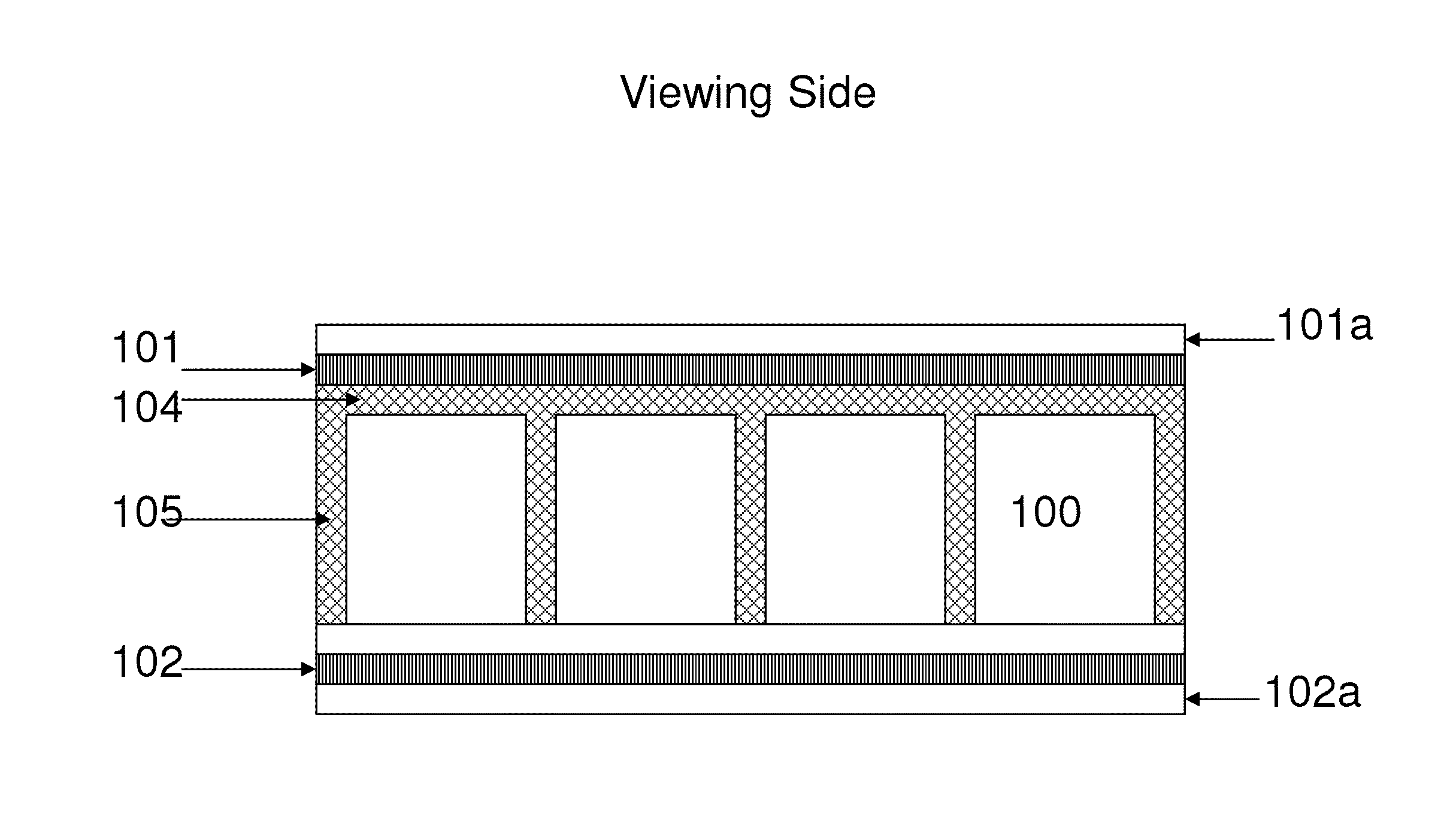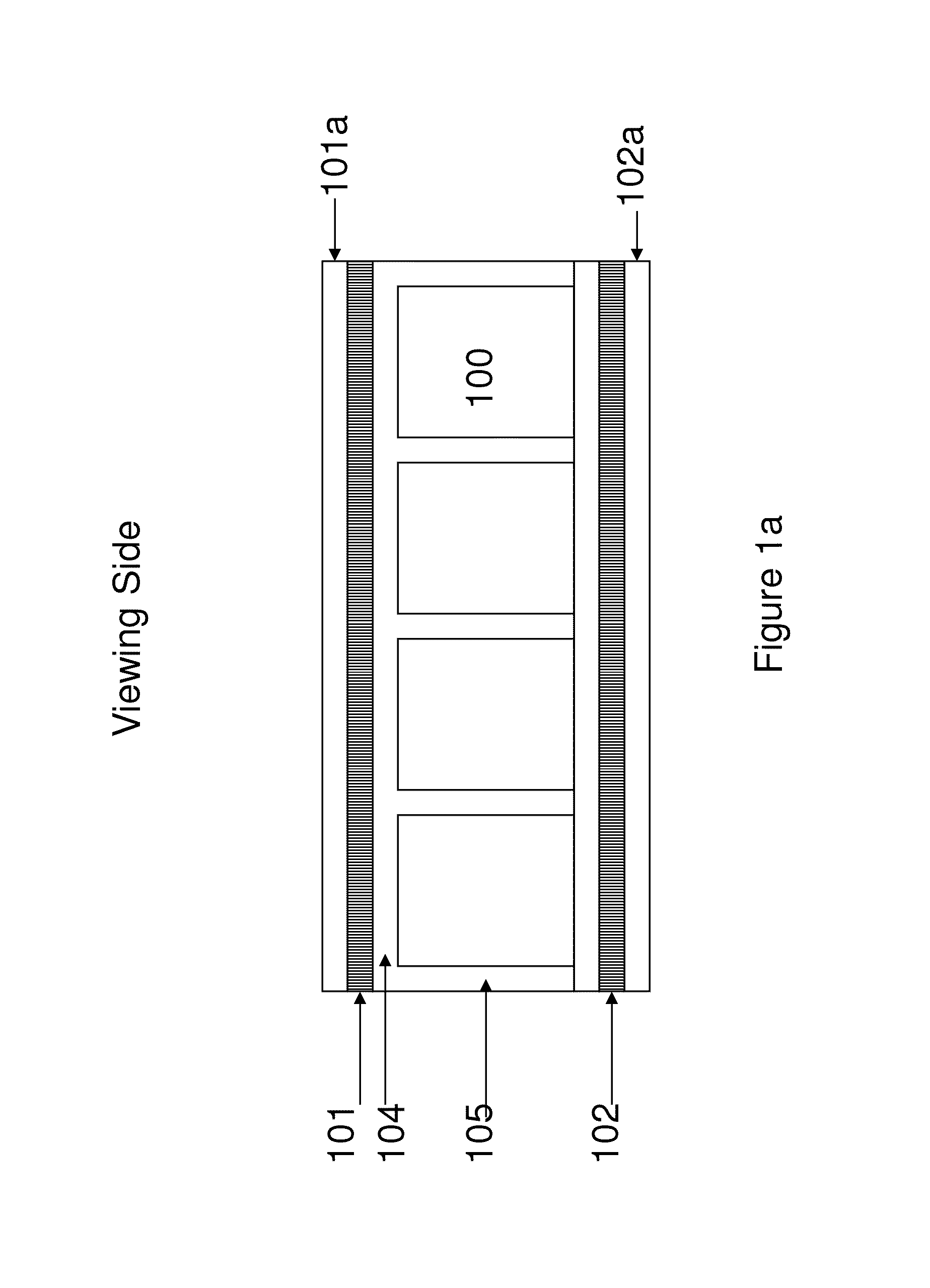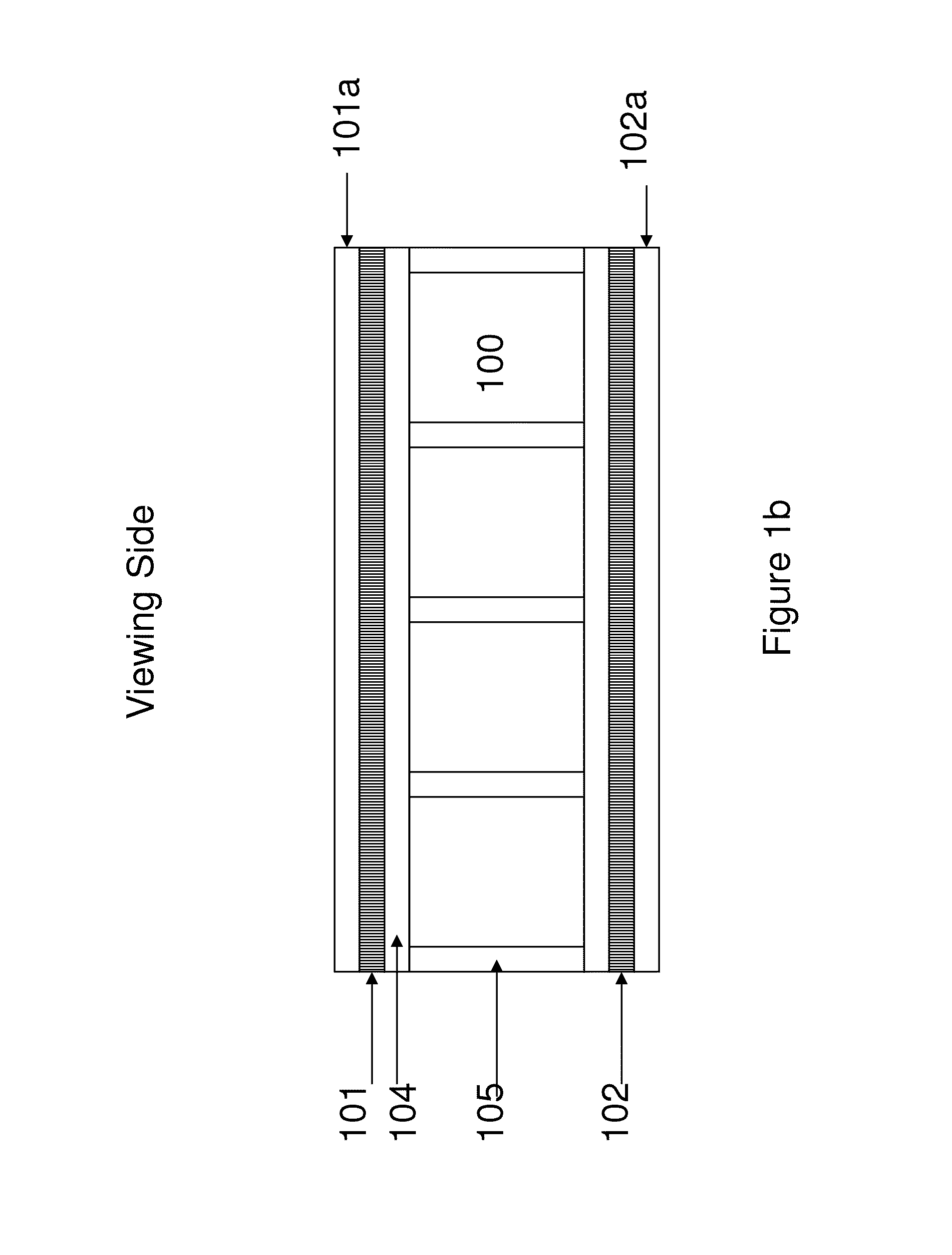Color tuning for electrophoretic display device
- Summary
- Abstract
- Description
- Claims
- Application Information
AI Technical Summary
Benefits of technology
Problems solved by technology
Method used
Image
Examples
example 1
Color Tuning Layer as a Separate Coating
[0076]
TABLE 1Chemical% By WeightComponentName% By Weightin Dry FormPolyacrylate—32.4299ResinTinopal OB2,5-Thio0.160.5phenediyl-bis(5-tert-butyl-1,3-benzoxazole)UV StabilizerBis(1,2,2,6,6-0.160.5292pentamethyl-4-piperidinyl)sebacateTetrahydrofuran—67.26—
[0077]Tinopal OB and UV stabilizer 292 were first dissolved in tetrahydrofuran and then a polyacrylate binder, the polyacrylate resin Elvacite 2028, was added in the solution with agitation. The mixture was kept under stirring until the polymer binder was completely dissolved. The resulting solution was coated on a PET plastic film surface with a wire wound coating rod (#6) and dried in an oven for 1 minute at 100° C. The resulting film had a thickness of about 5 um. This layer emitted blue visible light when exposed to UV light with a wavelength around 370 nm. The color tuning layer was laminated to an electrophoretic display film.
[0078]In Table 2 below, colors are expressed as the a* and b* va...
example 2
Color Tuning Material Incorporated into an Adhesive
[0080]
TABLE 3Component% By Weight% By Weight in Dry FormThermoplastic Polyurethane11.399.8Pigment Red0.0230.2Methylethyl88.677—Ketone (MEK)
[0081]Pigment particles were first dispersed in MEK with a mill roller for 24 hours and then homogenized for 10 minutes. The polyurethane resins were then added into the solution and stirred until they were completely dissolved. The mixture was coated onto a release liner with a drawdown bar at a thickness of 3 mil and then dried in an oven at 100° C. for 2 minutes. A luminance enhancement structure was laminated onto a display film with the resulting adhesive composition through the use of a laminator at 120° C. and 80 psi. The adhesive layer showed a shift of the a* value in the CIE L*,a*,b* color space system to the positive direction by 1 unit and neutralized the green tint.
example 3
Color Tuning in an Electrophoretic Fluid
[0082]About 1% by weight of a blue color tuning agent (Clariant Hostaperm B2G), was added to an electrophoretic fluid which comprised oppositely charged black and white particles. The fluid had about 4% by weight of the positively charged black particles and about 27% by weight of the negatively charged white particles. The blue color tuning agent was also negatively charged.
[0083]As shown in FIG. 6, originally a display film showed a yellowish tint and had a b* value higher than 2 at the white state, a blue pigment therefore was selected as a color tuning agent to decrease the b* value to 0 for a neutral white state. When the blue color tuning agent (Clariant Hostapern blue B2G) concentration in fluid reached 1% by weight, the b* value further decreases to −0.086, signifying the yellow tint at the white state had been neutralized.
[0084]Another aspect of the present invention is directed to a method for adjusting the color temperature of an el...
PUM
| Property | Measurement | Unit |
|---|---|---|
| color temperatures | aaaaa | aaaaa |
| color temperatures | aaaaa | aaaaa |
| color temperature | aaaaa | aaaaa |
Abstract
Description
Claims
Application Information
 Login to View More
Login to View More - R&D
- Intellectual Property
- Life Sciences
- Materials
- Tech Scout
- Unparalleled Data Quality
- Higher Quality Content
- 60% Fewer Hallucinations
Browse by: Latest US Patents, China's latest patents, Technical Efficacy Thesaurus, Application Domain, Technology Topic, Popular Technical Reports.
© 2025 PatSnap. All rights reserved.Legal|Privacy policy|Modern Slavery Act Transparency Statement|Sitemap|About US| Contact US: help@patsnap.com



